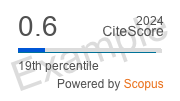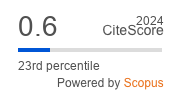Factors determining an unfavorable one-year prognosis of myocardial infarction complicated by left ventricular failure and associated with chronic cerebral ischemia
https://doi.org/10.29001/2073-8552-2020-35-2-106-113
Abstract
Aim. To evaluate factors of unfavorable annual prognosis of myocardial infarction (MI) complicated by heart failure (HF) with reduced ejection fraction (HFrEF) and associated with chronic cerebral ischemia (CCI).
Material and Methods. A total of 182 patients with Q wave myocardial infarction complicated by the left ventricular dysfunction concomitant with CCI were included in the study. Of them, 149 (81.9%) patients were men and 33 (18.1%) were women. The mean age was 60.4 (53; 69) years. All patients underwent echocardiography, color duplex scanning of the carotid arteries and examination by an interventional neurologist. Hard endpoints were collected within one year.
Results. The majority of the patients included in the study suffered from grade 2 CCI. Atherosclerotic plaques in the brachiocephalic arteries were found in 37.4% of patients; the degree of stenosis did not exceed 50% in all cases. 77 (46.1%) patients achieved hard endpoints within one year. Multivariate logistic regression showed that the most unfavorable predictor of poor 1-year survival was the presence of the positive history of ACVA [RR 7.33 (95% CI 1.97–27.32), p = 0.003], and the most unfavorable predictors of risk of adverse cardiovascular events included prior stroke [RR = 1.92 (95% CI 1.09–3.38), p = 0.025] and carotid atherosclerotic plaques [RR = 2.12 (95% CI 1.34–3.37), p = 0.001].
Conclusion. The presence of carotid atherosclerotic plaques and prior stroke affected the long-term prognosis in patients with myocardial infarction complicated by heart failure and chronic cerebral ischemia.
About the Authors
N. B. LebedevaRussian Federation
Dr. Sci. (Med.), Docent, Senior Research Scientist, Rehabilitation Laboratory,
6, Sosnoviy blvd., Kemerovo, 650002
L. Yu. Chesnokova
Russian Federation
Cand. Sci. (Med.), Head of the Infarction Department,
6, Sosnoviy blvd., Kemerovo, 650002
N. I. Tarasov
Russian Federation
Dr. Sci. (Med.), Professor, Professor of the Department of Outpatient Therapy, Postgraduate Training and Nursing,
22a, Voroshilova str., Kemerovo, 650029
References
1. Boytsov S.A., Shalnova S.A., Deev A.D. Cardiovascular mortality in the Russian Federation and possible mechanisms of its changes. Zh. Nevrol. Psikhiatr. im. S.S. Korsakova. 2018;118(8):98–103 (In Russ.). DOI: 10.17116/jnevro201811808198.
2. Suslina Z.A., Varakin Yu.A. Clinical guide to the early diagnosis, treatment, and prevention of vascular diseases of the brain; 2th ed. Мoscow: MEDpress-Inform; 2017:352 (In Russ.).
3. Sanchis-Gomar F., Perez-Quilis C., Leischik R., Lucia A. Epidemiology of coronary heart disease and acute coronary syndrome. Ann. Transl. Med. 2016;4(13):256–259. DOI: 10.21037/atm.2016.06.33.
4. Kure C.E., Rosenfeldt F.L., Scholey A.B., Pipingas A., Kaye M.D., Bergin P.J. et al. Relationships аmong сognitive function and cerebral blood flow, oxidative stress, and inflammation in older heart failure patients. J. Card. Fail. 2016;22(7):548–559. DOI: 10.1016/j.cardfail.2016.03.006.
5. Kashtalap V.V., Barbarash O.L., Kolomytceva I.S., Volykova M.A., Shibanova I.A., Zykov M.V. et al. Progression of multifocal atherosclerosis after myocardial infarction. Russian Journal of Cardiology and Cardiovascular Surgery. 2013;6(3):23–28 (In Russ.).
6. Avilova M.V., Kosmacheva E.D. Multifocal atherosclerosis: the problem of combined atherosclerotic lesion of arteries. Kreativnaya kardiologiya. 2013;1:5–13 (In Russ.).
7. Garganeeva A.А., Okrugin S.A., Borel K.N., Kuzheleva E.A., Parshin E.A. Myocardial infarction at the turn of the century: demographic and social trends. Clinical Мedicine. 2016;94(6):463–466 (In Russ.). DOI: 10.18821/0023-2149-2016-94-6-463-466.
8. McManus D.D., Chinali M., Saczynski J.S., Gore J.M., Yarzebski J., Spencer F.A. et al. 30-year trends in heart failure in patients hospitalized with acute myocardial infarction. Am. J. Cardiol. 2011;107(3):353–359. DOI: 10.1016/j.amjcard.2010.09.026.
9. Mareev V.Yu., Fomin I.V., Ageev F.T., Arutyunov G.P., Bagrambekova Yu.L., Belenkov Yu.N. et al. Clinical guidelines. Chronic heart failure. Russian Heart Failure Journal. 2017;18(1):3–40 (In Russ.). DOI: 10.18087/rhfj.2017.1.2346.
10. Kostenko V.A., Sitnikova M.Yu., Skorodumova E.A., Fedorov A.N., Skorodumova E.G. New scale for assessment of prognosis of survival for two years after hospitalization because of acute decompensation of heart failure. Cardiology. 2017;57(6): 33–39 (In Russ.). DOI: 10.18565/cardio.2017.6.33-39.
11. Brezinov O.P., Klempfner R., Zekry S.B., Sagit B., Goldenberg I., Kuperstein R. Prognostic value of ejection fraction in patients admitted with acute coronary syndrome: A real world study. Medicine. 2017;96(9):e6226. DOI: 10.1097/MD.0000000000006226.
12. Rahmayani F., Paryono I., Setyopranoto I. The role of ejection fraction to clinical outcome of acute ischemic stroke patients J. Neurosci. Rural. Pract. 2018;9(2):197–202. DOI: 10.4103/jnrp.jnrp_490_17.
13. Antipenko E.A., Gustov A.V. Chronic brain ischemia. Current state of the the problem. Medical Council. 2016;19:38–43 (In Russ.). DOI: 10.21518/2079-701X-2016-19-38-43.
14. Chichkova M.A., Kozlova O.S., Adzhigitov A.Y., Chichkov A.M. Clinical predictors of acute disorders of cerebral circulation in patients with acute myocardial infarction. Modern of Science and Education. 2016;5:55–63 (In Russ.). URL: http://www.science-education.ru/ru/article/view?id=25328.
15. Fonjakin A.V., Mashin V.V., Geraskina L.A., Mashin V.Vl. Cardiogenic encephalopathy. Risk factors and treatment approaches. Consilium Medicum. 2012;14(2):5–9 (In Russ.).
16. Bajkov V.Yu. Combined atherosclerotic coronary and brachiocephalic arteries – the choice of surgical tactics. Bulletin of Pirogov National Medical and Surgical Center. 2013;8(4):108–111 (In Russ.).
17. Kablak-Ziembicka A., Tracz W., Przewlocki T., Pieniazek P., Sokolowski A., Konieczynska M. Association of increased carotid intima– media thickness with the extent of coronary artery disease. Heart. 2004;90(11):1286–1290. DOI: 10.1136/hrt.2003.025080.
18. Shmonin A.A., Krasnov V.S., Shmonina I.A., Melnikova E.V. Modern therapy of chronic cerebrovascular accident. The Russian Archives of Internal Medicine. 2014;(4):4–8 (In Russ.). DOI: 10.20514/2226-6704-2014-0-4- 4-8.
19. Chichkova M.A., Kozlova O.S., Orlov F.V. Features of the combination of myocardial infarction and acute stroke. Astrakhan Medical Journal. 2016;1:55–63 (In Russ.).
20. Lam C.S.P., Gamble G.D., Ling L.H., Sim D., Leong K.T.G., Yeo P.S.D. et al. Mortality associated with heart failure with preserved vs. reduced ejection fraction in a prospective international multi-ethnic cohort study. Eur. Heart J. 2018;39(20):1770–1780. DOI: 10.1093/eurheartj/ehy005.
21. Garganeeva A.A., Kuzheleva E.A., Aleksandrenko V.A. A population study of long term outcomes of acute myocardial infarction in Tomsk. Russian Journal of Cardiology. 2017;151(11):27–30 (In Russ.). DOI: 10.15829/1560-4071-2017-11-27-30.
22. Sumin A.N., Kukhareva I.N., Trubnikova O.A., Kovalenko A.V. Carotid artery stenotic lesions in patients with ischemic stroke: prevalence, severity and associated factors. Complex Issues of Cardiovascular Diseases. 2013;(3):12–17 (In Russ.). DOI: 10.17802/2306-1278-2013-3-12-17.
23. Trunova E.S. Heart condition and the course of the acute period of ischemic stroke: Аbstr. Dis. … Cand. Med. Sci. Moscow; 2008:28 (In Russ.).
24. Mathews R., Wang T.Y., Honeycutt E., Henry T.D., Zettler M., Chang M. et al.; TRANSLATE-ACS Study Investigators. Persistence with secondary prevention medications after acute myocardial infarction: Insights from the TRANSLATE-ACS study. Am. Heart J. 2015;170(1):62–69. DOI: 10.1016/j.ahj.2015.03.019.
Review
For citations:
Lebedeva N.B., Chesnokova L.Yu., Tarasov N.I. Factors determining an unfavorable one-year prognosis of myocardial infarction complicated by left ventricular failure and associated with chronic cerebral ischemia. Siberian Journal of Clinical and Experimental Medicine. 2020;35(2):106-113. (In Russ.) https://doi.org/10.29001/2073-8552-2020-35-2-106-113





.png)





























